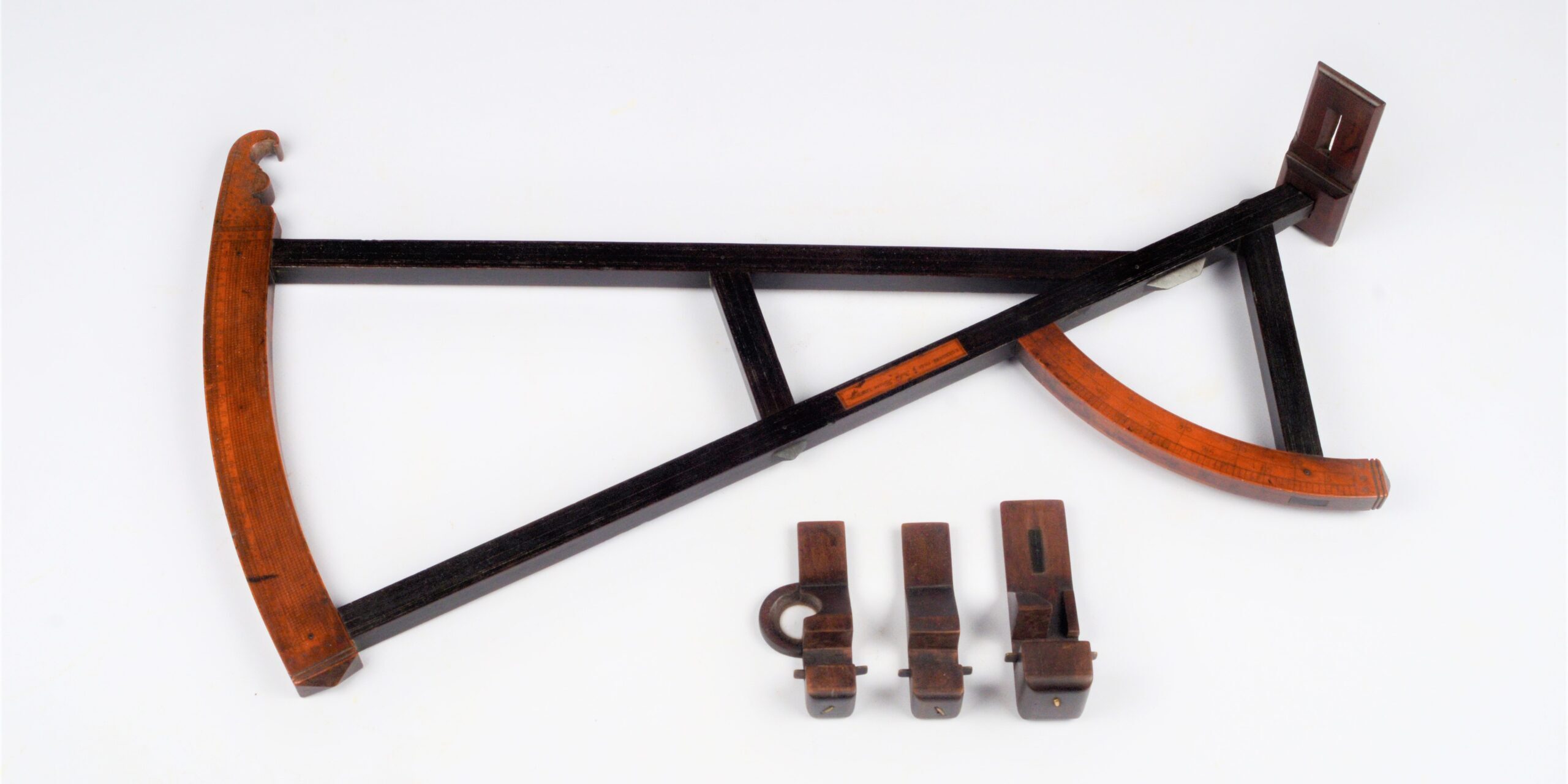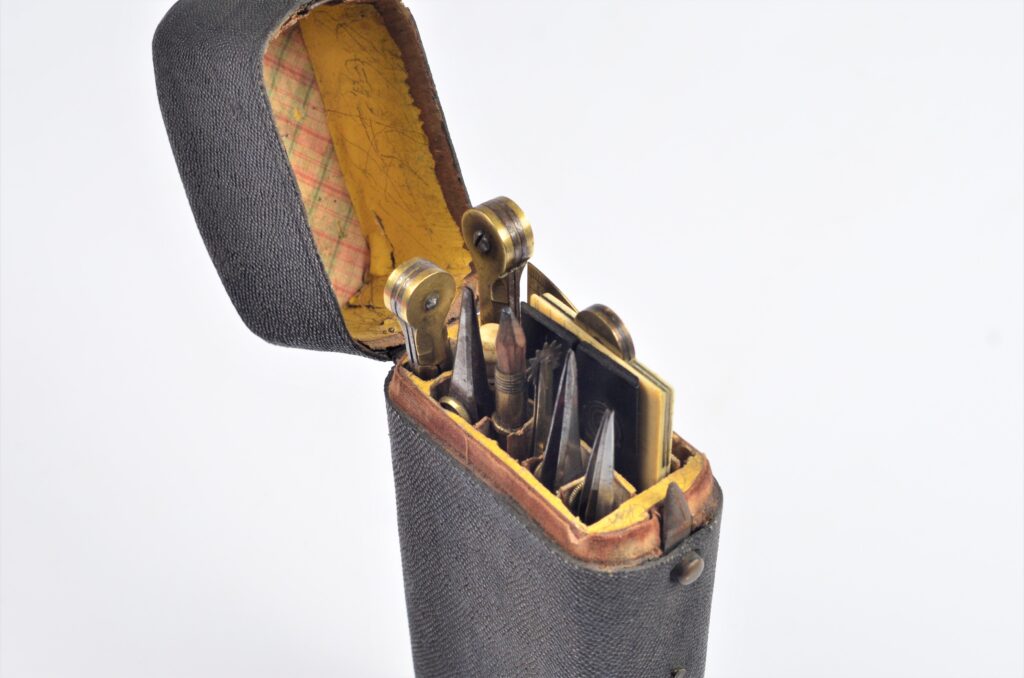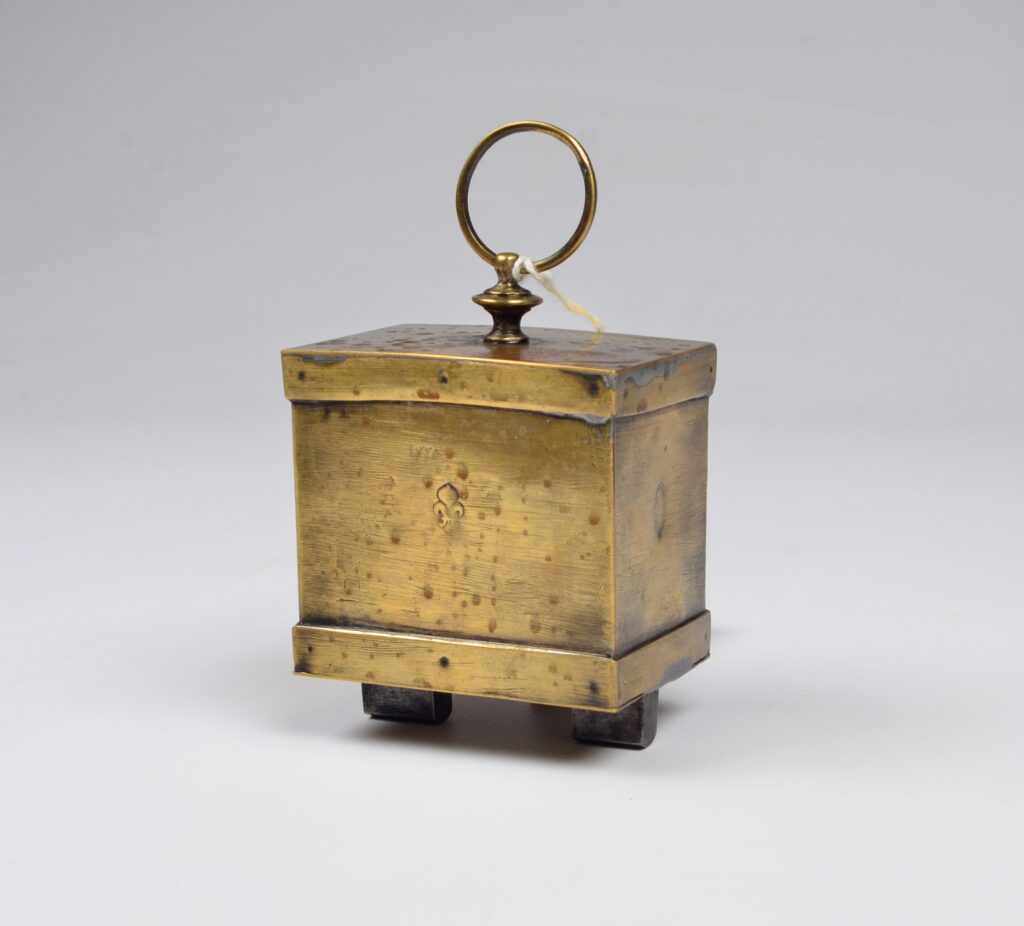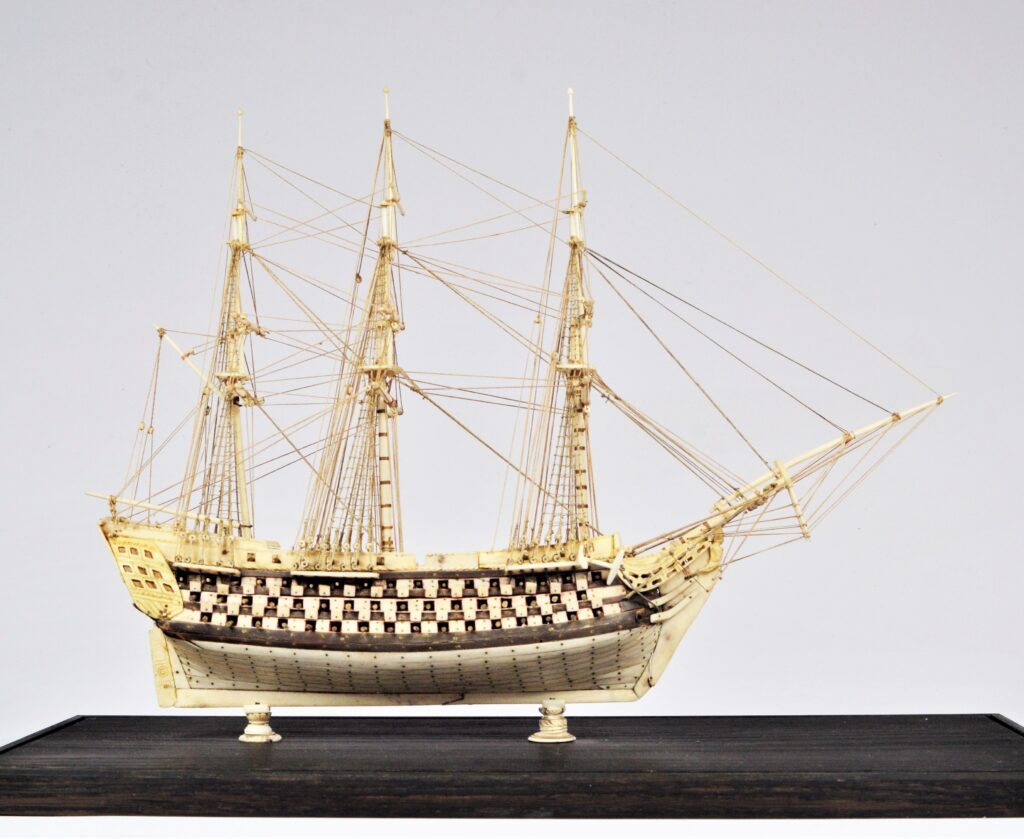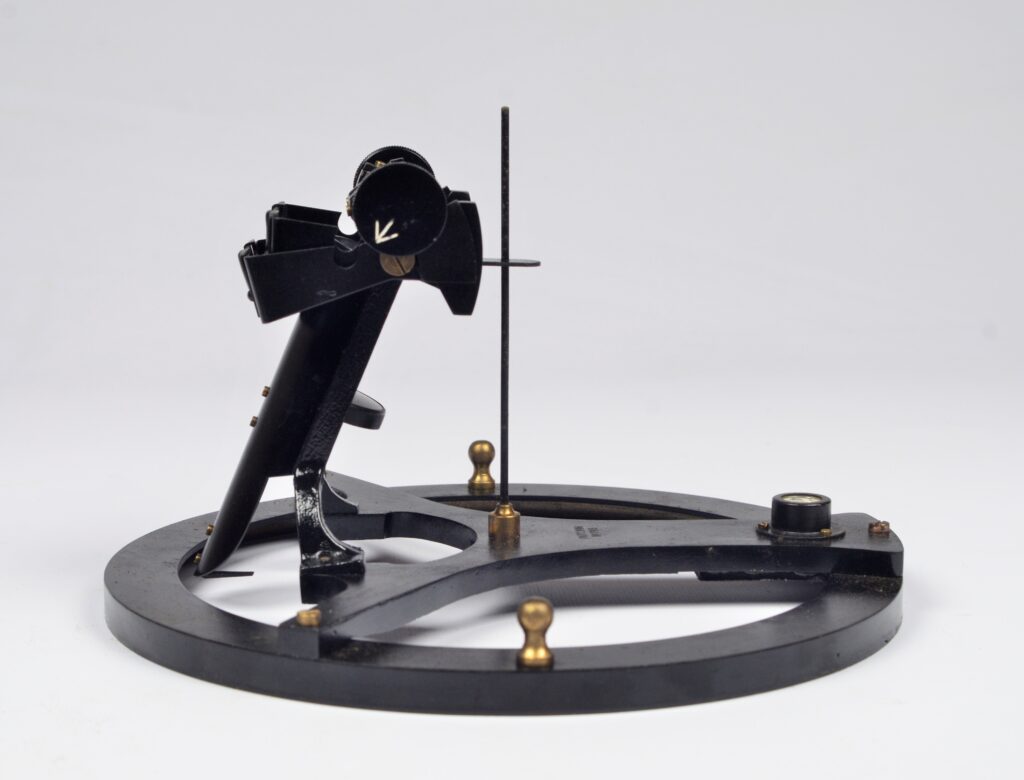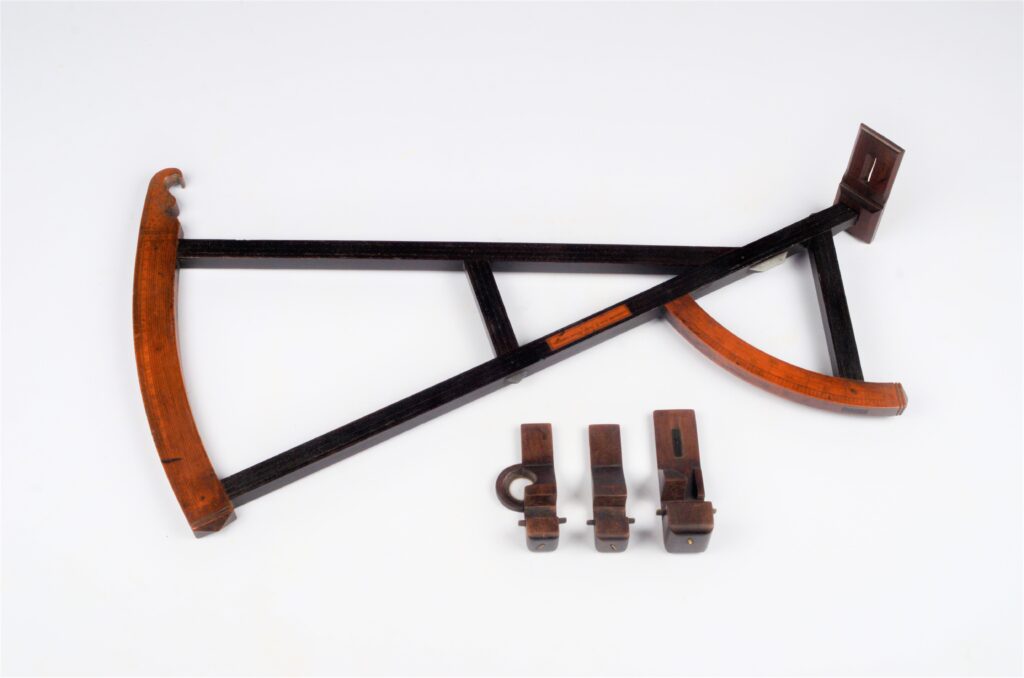Shagreen cased chart work instruments – early 19th century
A fine and complete two hundred year old shagreen cased set of chart work instruments. All twelve parts are original and present, including two ivory sectors and ebony rule. Also made of brass, two dividers with complete and matching attachments for ink, pencil lines and dotting wheel,
Read MoreArtificial black glass horizon – circa 1800
The artificial horizon was designed for use when the natural horizon is not visible due to weather conditions or darkness. It is used in conjunction with a sextant. The angle of reflection of a celestial body on the mirror is equal to the angle of incidence. The history of the artificial horizon dates back to…
Read MoreLodestone – 17th century
Lodestone mounted in a brass frame with carrying ring on top. With two pieces of steel at the bottom to increase the magnetic strength of the lodestone. French lilies on all sides. Catalogue: NM.6-06 Date: 1600-1650 HWL: 68x71x53 mm, overall height with ring 130 mm Signed: not signed Origin: probably French Condition: in excellent and…
Read MoreAntique French Prisoner of War Bone Ship Model – c. 1810
A fine and early 19th century Napoleontic French prisoner-of-war bone and baleen ship model of a fully rigged 110 gun war ship. With fine planked and pinned hull, open gun ports with brass guns, deck features and fittings including casks, capstans etcetera, bound masts, standing and running rigging with bone blocks. Catalog: SM.1-20 Date: 1800-1820…
Read MoreStandard Bearing Sight in wooden case
Standard bearing sight with two vanes for use on the gauge compass. The box is assembled with dove tail connections. Provenance Datema, Delfzijl Netherlands. Catalogue: NM.6-03 Date: ca. 1930-1950 HWL case: 7.5×22.5×26 cm Signed: not signed Origin: unknown Condition: good with signs of wear; case in very good condition
Read MoreAzimuth Mirror, Patt. 996
With the azimuth mirror on the compass the direction of a celestial body can be determined, expressed in degrees. Used among other things, to determine the deviation of the compass. The black lackered, brass mirror of unknown maker is never used and comes with a loose pen in a wooden case. The spare pen is…
Read MoreEarly 20th Century brass German Kriegsmarine Sextant – Haecke, Germany
Very fine and complete sextant of black painted brass in original case. The inside is simply but effectively furnished. The platina scale, graduated from -5 to 135 degrees, set in a brass arc. Made by Haecke in Neukölln. In the handle is a crown with the letter M and number 1634, the same number as…
Read MoreSchermuly Line Throwing Apparatus – SPRA Works, England, ca. 1930
‘Entirely British’ Schermuly line throwing apparatus or pistol rocket apparatus in original US Navy case, marked No. 2 with nameplate of the Schermuly factory. On the inner lid instructions for use. In the case four line boxes, each containing 250 yards of line and four rockets with steel lines and a brush for cleanig the…
Read MoreDavis Quadrant or Backstaff with vanes – H. Gregory, London, ca. 1780
After the astrhttps://archipel-img.com/wp-admin/edit.php?post_type=objectolabe and the Jacob’s staff, in 1595 John Davis invented the backstaff to determine the altitude of the sun at sea. His improved design became known as the Davis Quadrant. The observer stood with his back to the sun and didn’t have to look at the bright sunlight. The instruments has two concentric…
Read More